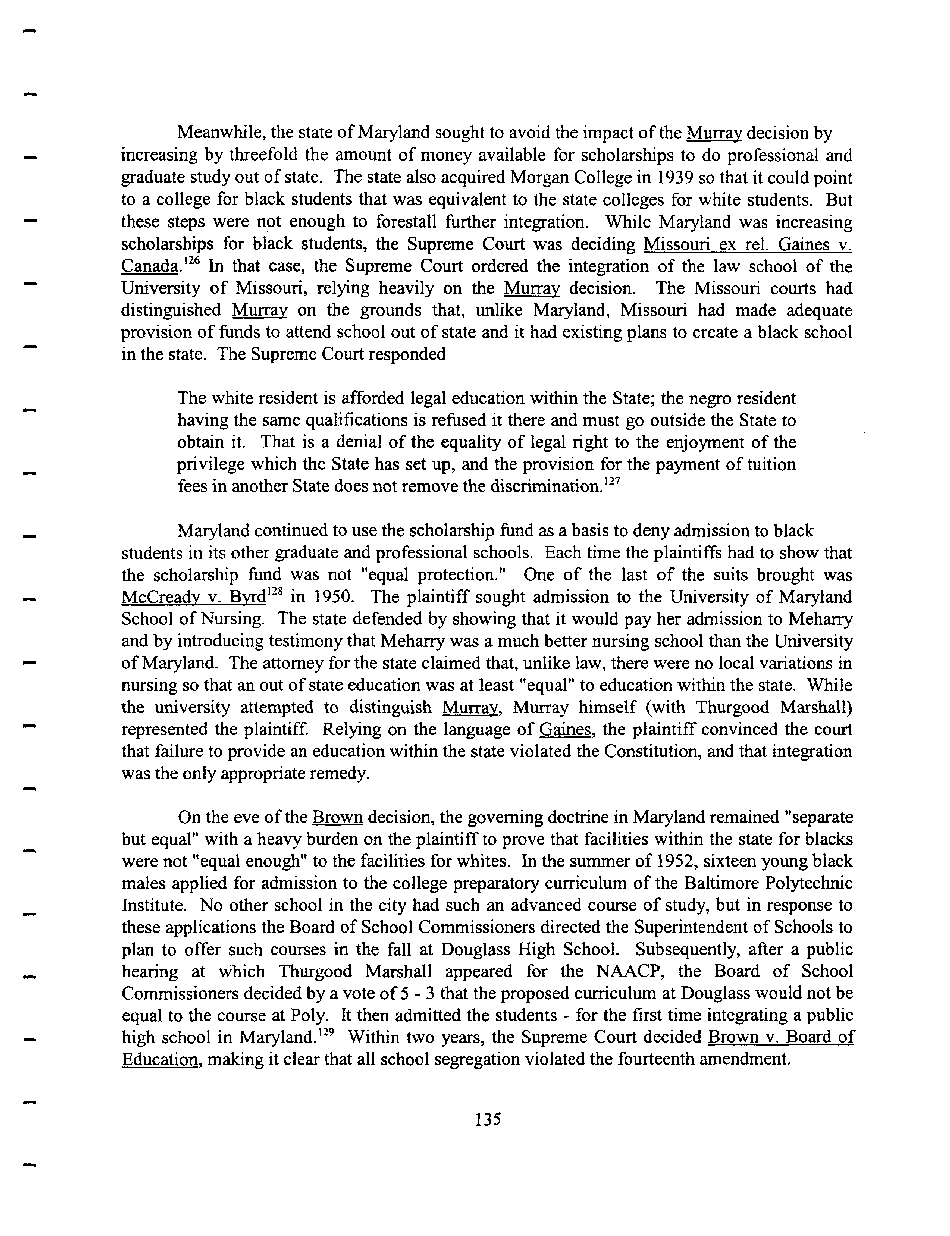|
Meanwhile, the state of Maryland sought to avoid the impact of the Murray decision by
increasing by threefold the amount of money available for scholarships to do professional and
graduate study out of state. The state also acquired Morgan College in 1939 so that it could point
to a college for black students that was equivalent to the state colleges for white students. But
these steps were not enough to forestall further integration. While Maryland was increasing
scholarships for black students, the Supreme Court was deciding Missouri ex rel. Gaines v.
Canada.126 In that case, the Supreme Court ordered the integration of the law school of the
University of Missouri, relying heavily on the Murray decision. The Missouri courts had
distinguished Murray on the grounds that, unlike Maryland, Missouri had made adequate
provision of funds to attend school out of state and it had existing plans to create a black school
in the state. The Supreme Court responded
The white resident is afforded legal education within the State; the negro resident
having the same qualifications is refused it there and must go outside the State to
obtain it. That is a denial of the equality of legal right to the enjoyment of the
privilege which the State has set up, and the provision for the payment of tuition
fees in another State does not remove the discrimination.127
Maryland continued to use the scholarship fund as a basis to deny admission to black
students in its other graduate and professional schools. Each time the plaintiffs had to show that
the scholarship fund was not "equal protection." One of the last of the suits brought was
McCreadv v. Bvrd128 in 1950. The plaintiff sought admission to the University of Maryland
School of Nursing. The state defended by showing that it would pay her admission to Meharry
and by introducing testimony that Meharry was a much better nursing school than the University
of Maryland. The attorney for the state claimed that, unlike law, there were no local variations in
nursing so that an out of state education was at least "equal" to education within the state. While
the university attempted to distinguish Murray, Murray himself (with Thurgood Marshall)
represented the plaintiff. Relying on the language of Gaines. the plaintiff convinced the court
that failure to provide an education within the state violated the Constitution, and that integration
was the only appropriate remedy.
On the eve of the Brown decision, the governing doctrine in Maryland remained "separate
but equal" with a heavy burden on the plaintiff to prove that facilities within the state for blacks
were not "equal enough" to the facilities for whites. In the summer of 1952, sixteen young black
males applied for admission to the college preparatory curriculum of the Baltimore Polytechnic
Institute. No other school in the city had such an advanced course of study, but in response to
these applications the Board of School Commissioners directed the Superintendent of Schools to
plan to offer such courses in the fall at Douglass High School. Subsequently, after a public
hearing at which Thurgood Marshall appeared for the NAACP, the Board of School
Commissioners decided by a vote of 5 - 3 that the proposed curriculum at Douglass would not be
equal to the course at Poly. It then admitted the students - for the first time integrating a public
high school in Maryland.129 Within two years, the Supreme Court decided Brown v. Board of
Education, making it clear that all school segregation violated the fourteenth amendment.
135
�
|

